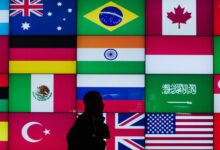
The day isn’t just a celebration of military triumph – it is a celebration of victory over death

© RT / RT
WWII Victory Day, celebrated in Russia on May 9, has become a special holiday. The war was both the greatest trial and the greatest triumph in Russia’s modern history. However, the celebrations acquired their current shape and form not so long ago, and some important traditions were established quite recently.
How it all started
The Act of Unconditional Surrender of the German Third Reich was signed by Field Marshal Wilhelm Keitel on May 8, 1945, at 22:43 Central European Time. In Moscow, it was already the early hours of May 9th. That very morning, Russians found out that the war, which had claimed 27 million Soviet lives, was finally over and the enemy had surrendered.
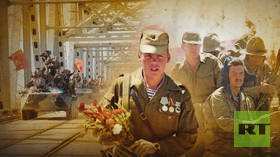
Read more
The first celebration of victory in WWII – or the Great Patriotic War, as it is known in Russia – took place that very day. Army reports instantly dropped their official tone and described how the residents of Prague pulled the troops off their armored vehicles to dance and drink together. In the provinces, people ran out on the streets and congratulated each other. Indeed, some fanatical Nazis continued to put up resistance, Europe was full of mines, and reports stated that there were many losses throughout the month of May. But the big war was over, and to the sound of fireworks, people returned home.
No one doubted that victory in WWII was an incredibly important event. However, people were grieving the deaths of their relatives and friends, and their pain was great. May 9 was immediately designated a national holiday. However, lavish celebrations seemed out of place as the country was in ruins, and mentally and physically crippled soldiers, concentration camp prisoners, ‘ostarbeiters’ and refugees returned home.
In Western Ukraine and the Baltic States, battles against nationalist partisans continued. In those years, the Victory Day Parade was held only once, in the summer of 1945. During this grand spectacle, Wehrmacht and SS banners seized in Germany were thrown in front of the Kremlin. But in the following years, the celebrations became more modest. Every year on May 9th there was a fireworks display, but otherwise, from 1947 it was a regular workday (even though a festive one), and veterans usually celebrated it with friends.
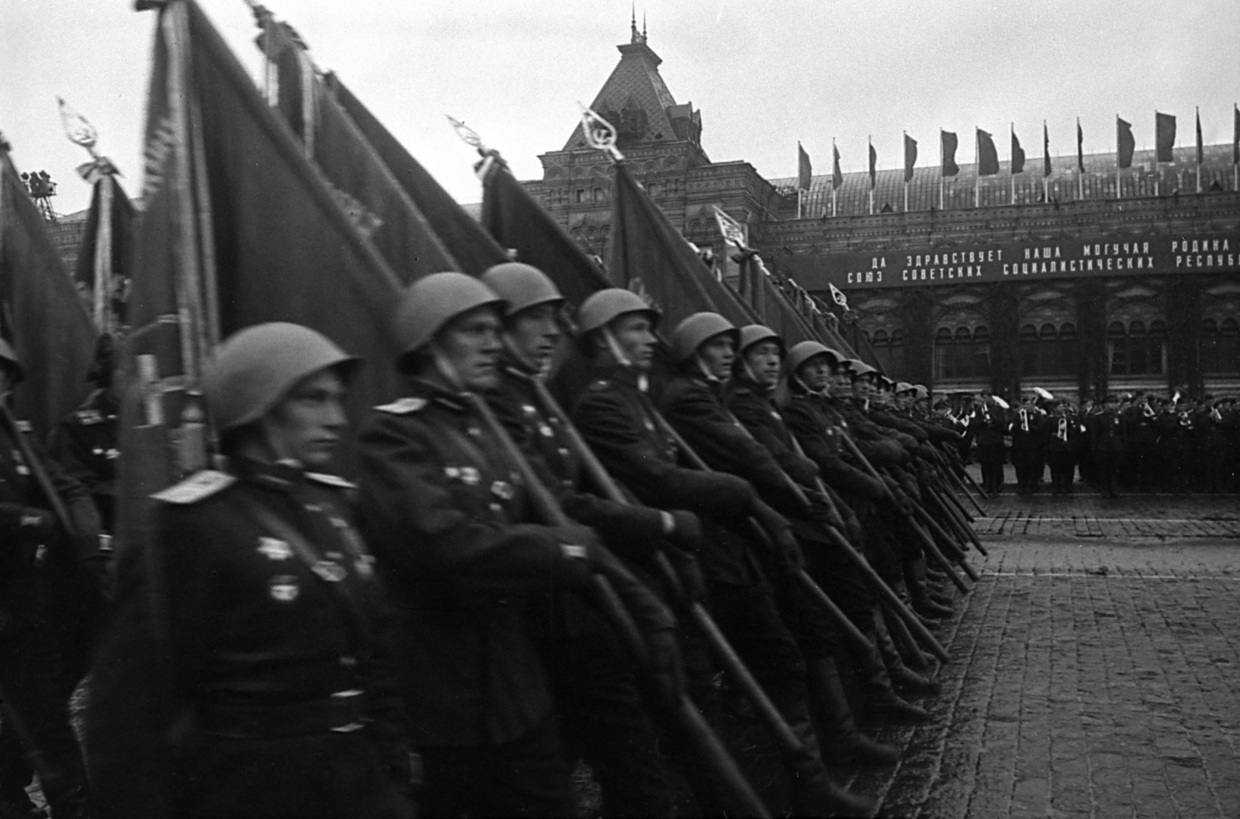
FILE PHOTO. A front’s regiment color-bearers, V-Day parade in Red Square, June 24, 1945. © Sputnik/Loskutov
Things changed in 1965. By that time, 20 years had passed since the end of the war. New Soviet leader Leonid Brezhnev, himself a WWII veteran, decided to once again make May 9 a day off. From then on, military parades were held on Victory Day jubilees, the Tomb of the Unknown Soldier memorial was opened by the Kremlin wall, and the tradition of laying wreaths at the memorials was established. In short, the holiday acquired a grand scale and became quite solemn after the nation’s pain had somewhat subsided.
The country is gone, but the memory remains
The annual large-scale celebration of Victory Day, with parades held across the country and a military parade on Moscow’s Red Square, is a fairly new tradition. After the collapse of the Soviet Union, an obvious question arose – what should be done with the country’s communist legacy and symbology? For example, the Day of the 1917 Revolution was observed on November 7. It was replaced by another holiday, associated with Russian national heroes Minin and Pozharsky, who lived in the 17th century. But no one ever considered revising May 9th as Victory Day.
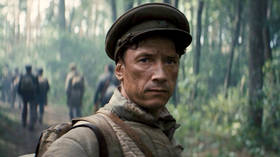
Read more
However, the authorities wanted to separate the holiday from socialist ideology. In the Soviet Union, ideology and victory were inseparable. But in the 90s, a new era had dawned. The USSR had collapsed. Moreover, many war heroes fell prey to new conflicts. For example, Vladimir Bochkovsky, a hero of the battles in Ukraine and Germany, became a citizen of the unrecognized Republic of Transnistria, which started a bloody uprising against the former Soviet Republic of Moldova. Meliton Kantaria – the standard-bearer who had hoisted the Soviet flag over the Reichstag – was forced to flee from Abkhazia when an ethnic conflict broke out between the Abkhazians and Georgians, even though by that time, he was a very old man. At that time, a question arose – what does Victory Day mean for the new republics?
Opinions differed. In the Baltic states, national elites believed that in the 40s their countries had been held hostage by two totalitarian regimes. Moreover, unofficially, the Nazis were preferred over the communists – for example, in Latvia, the memorial day of the Latvian SS Legion was officially celebrated for some time.
In many other former USSR republics, Victory Day is celebrated in one way or another.
In Russia, Victory Day has remained one of the most important national holidays, and a key moment in Russian history. However, the holiday has lost some of its political meaning. For example, Lenin’s Mausoleum is draped on May 9 in order to avoid ideological ties, and a new symbol has been added to the celebrations – the black and orange St. George ribbon, which resembles both the ribbon of the Order of St. George (the highest military decoration in Imperial Russia) and the ribbon of the Order of Glory – a WWII soldier’s award.
Russian communists and leftists didn’t like the fact that the Soviet symbols were replaced. However, for the majority of Russian people, other aspects turned out to be more important. WWII impacted almost every family in Russia, and most people consider the Soviet era as simply one period in the country’s history. Therefore, national motives are considered more important than Soviet symbology.
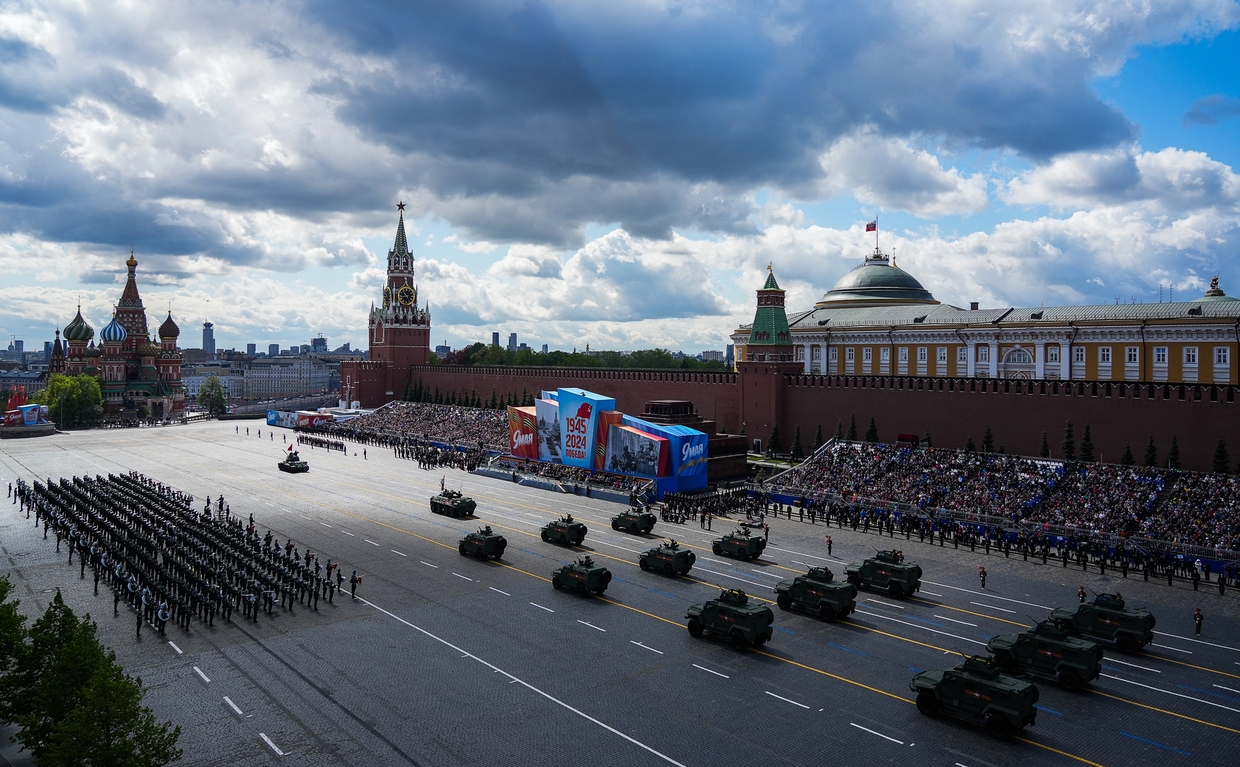
Russian servicemen take part in a rehearsal for a military parade marking the 79th anniversary of the victory over Nazi Germany in World War Two, in Moscow, Russia. © Sputnik/Alexander Vilf
However, an even more pressing question was how Victory Day would look and what it would mean following the death of most war veterans. WWII was mainly won by people who were born in the 1900s-1920s. The last generation which really participated in the war was born in 1926. By 2010, these veterans were already 85 years old. And today, most Russians do not personally know anyone who fought in WWII.
The answer to the question “What to do next?” was eventually found – and it was offered not by the state, but by the people themselves.
An old holiday celebrated in a new way
In 2012, three journalists from the provincial city of Tomsk organized a street march. The descendants of veterans marched through the city, bearing photos of their deceased relatives who had fought in WWII. This event was dubbed the ‘Immortal Regiment’. That year, 6,000 people participated in the march on May 9. And while for these people, the war was no longer a part of their own lives, it remained a part of family history. After all, nearly everyone had a grandfather or grandmother who fought, and if the word “great-grandfather” sounded abstract to many, “my grandmother’s father” felt much more personal.
The idea of marching with the photographs of their heroic ancestors appealed to people all over Russia, and the very next year, Immortal Regiment events were held in almost all the major cities of Russia. The march instantly became a Victory Day tradition and the event gained official status. An online offshoot of the Immortal Regiment also appeared – a platform where anyone can publish information about their ancestors who fought in WWII. The number of such records on the website is approaching one million. Thus, May 9th acquired a new meaning – it became not only a veterans’ holiday or a celebration of military triumph, but also a memorial march which allowed people to honor their personal family history.
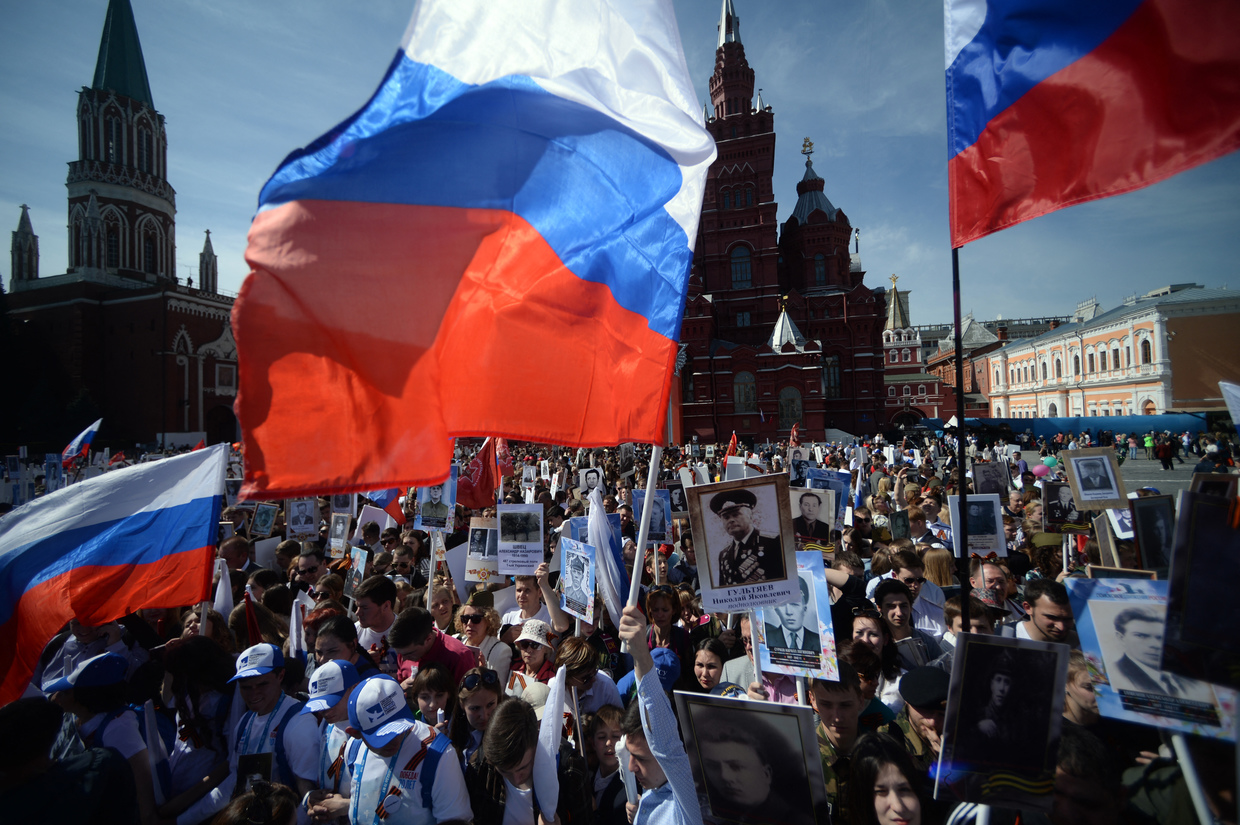
FILE PHOTO. People carry portraits of World War II soldiers as they take part in the Immortal Regiment march during the Victory Day celebrations in Moscow on May 9, 2015. © HOST PHOTO AGENCY RIA NOVOSTI/AFP
Each country has its own memorable dates. For example, July 4th brings Americans together, but for the rest of the world, it is just like any other day. For China, October 1st – the Day of the Formation of the People’s Republic of China – is one of the main dates in its history.
For Russia, May 9th is a date that is permanently ingrained in the country’s history and culture. During WWII, the people of our country, along with those of other USSR republics, survived a meat grinder that lasted four years. They did not allow themselves to be broken, but defeated the enemy – and then proceeded to rebuild their country from the ruins. Russia lost a lot of people in WWII, and victory came at an unthinkable price. But it was unconditional.
That is why for Russians, May 9th isn’t just a celebration of military triumph – it is a celebration of victory over death.
By Roman Shumov, a Russian historian focused on conflicts and international politics



